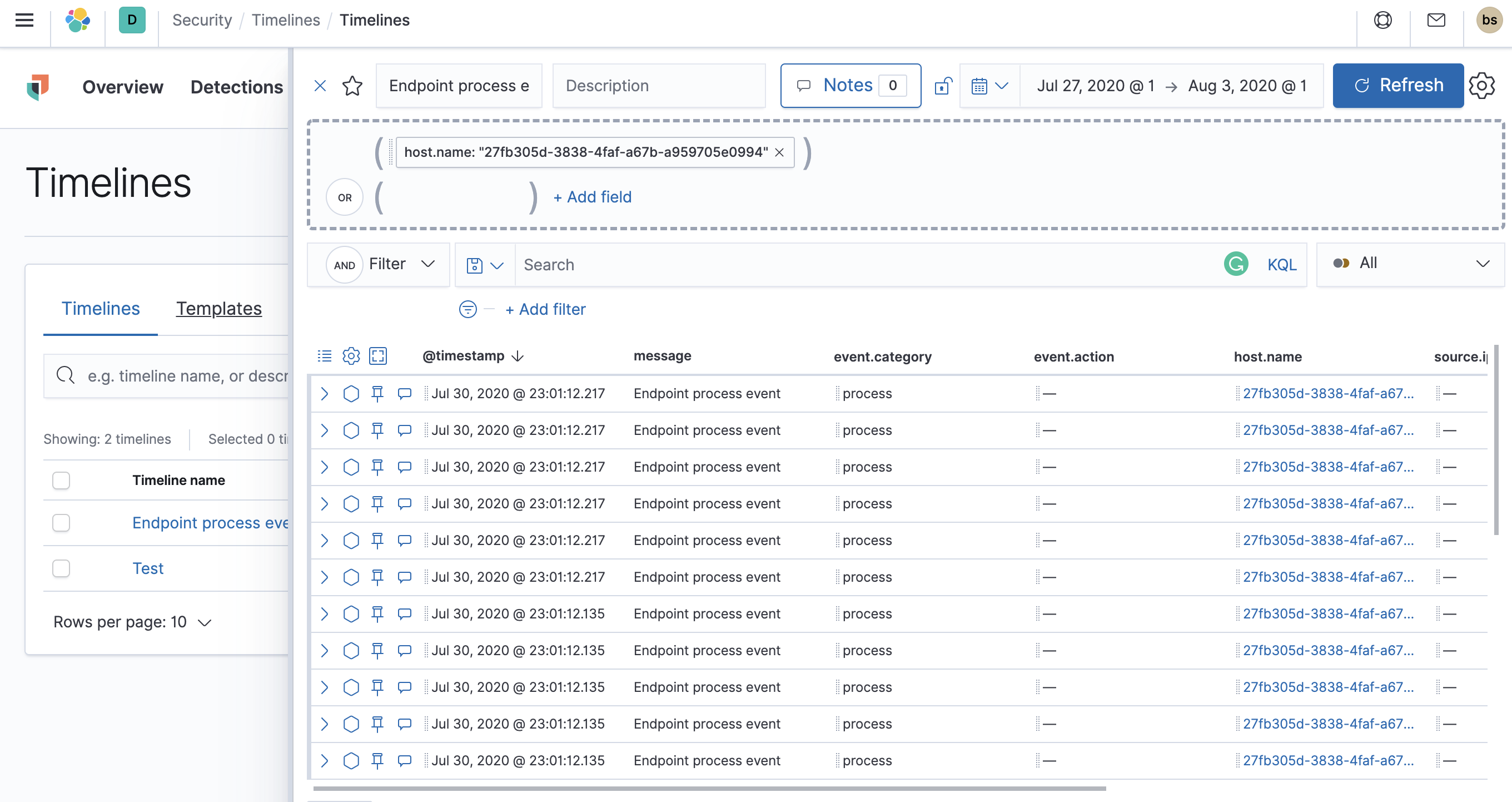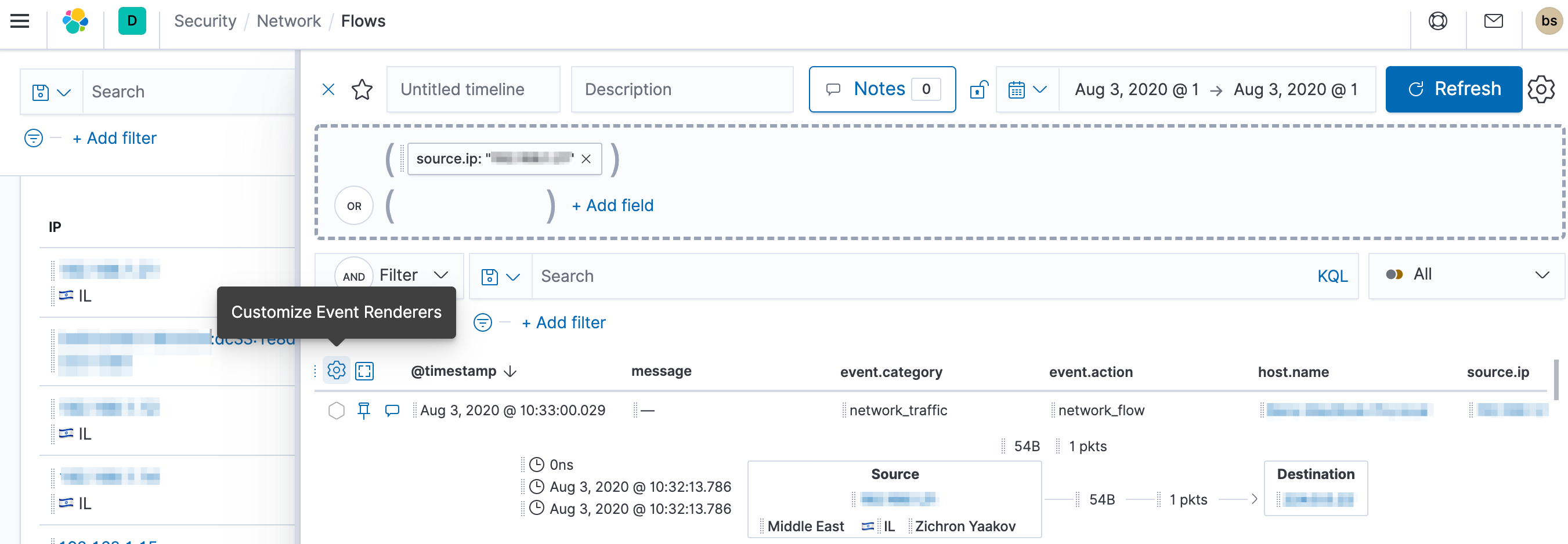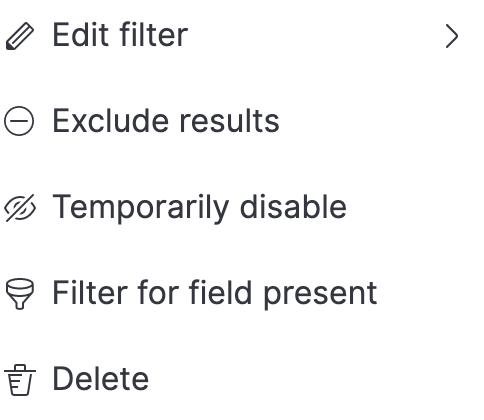- Elastic Security: other versions:
- Elastic Security overview
- What’s new
- Get started with Elastic Security
- Elastic Security UI
- Anomaly Detection with Machine Learning
- Detections and Alerts (beta)
- Creating detection rules
- Managing detection rules
- Monitoring and troubleshooting rule executions
- Rule exceptions and value lists
- About building-block rules
- Managing detection alerts
- Tuning prebuilt detection rules
- Prebuilt rule changes per release
- Prebuilt rule reference
- AWS Access Secret in Secrets Manager
- AWS CloudTrail Log Created
- AWS CloudTrail Log Deleted
- AWS CloudTrail Log Suspended
- AWS CloudTrail Log Updated
- AWS CloudWatch Alarm Deletion
- AWS CloudWatch Log Group Deletion
- AWS CloudWatch Log Stream Deletion
- AWS Config Service Tampering
- AWS Configuration Recorder Stopped
- AWS EC2 Encryption Disabled
- AWS EC2 Flow Log Deletion
- AWS EC2 Network Access Control List Creation
- AWS EC2 Network Access Control List Deletion
- AWS EC2 Snapshot Activity
- AWS Execution via System Manager
- AWS GuardDuty Detector Deletion
- AWS IAM Assume Role Policy Update
- AWS IAM Brute Force of Assume Role Policy
- AWS IAM Deactivation of MFA Device
- AWS IAM Group Creation
- AWS IAM Group Deletion
- AWS IAM Password Recovery Requested
- AWS IAM User Addition to Group
- AWS Management Console Root Login
- AWS RDS Cluster Creation
- AWS RDS Cluster Deletion
- AWS RDS Instance/Cluster Stoppage
- AWS Root Login Without MFA
- AWS S3 Bucket Configuration Deletion
- AWS WAF Access Control List Deletion
- AWS WAF Rule or Rule Group Deletion
- Adding Hidden File Attribute via Attrib
- Administrator Privileges Assigned to Okta Group
- Adobe Hijack Persistence
- Adversary Behavior - Detected - Elastic Endpoint Security
- Anomalous Process For a Linux Population
- Anomalous Process For a Windows Population
- Anomalous Windows Process Creation
- Attempt to Create Okta API Token
- Attempt to Deactivate MFA for Okta User Account
- Attempt to Deactivate Okta MFA Rule
- Attempt to Deactivate Okta Policy
- Attempt to Delete Okta Policy
- Attempt to Disable IPTables or Firewall
- Attempt to Disable Syslog Service
- Attempt to Modify Okta MFA Rule
- Attempt to Modify Okta Network Zone
- Attempt to Modify Okta Policy
- Attempt to Reset MFA Factors for Okta User Account
- Attempt to Revoke Okta API Token
- Attempted Bypass of Okta MFA
- Base16 or Base32 Encoding/Decoding Activity
- Base64 Encoding/Decoding Activity
- Bypass UAC via Event Viewer
- Clearing Windows Event Logs
- Command Prompt Network Connection
- Connection to External Network via Telnet
- Connection to Internal Network via Telnet
- Creation of Hidden Files and Directories
- Credential Dumping - Detected - Elastic Endpoint Security
- Credential Dumping - Prevented - Elastic Endpoint Security
- Credential Manipulation - Detected - Elastic Endpoint Security
- Credential Manipulation - Prevented - Elastic Endpoint Security
- DNS Activity to the Internet
- DNS Tunneling
- Delete Volume USN Journal with Fsutil
- Deleting Backup Catalogs with Wbadmin
- Deletion of Bash Command Line History
- Direct Outbound SMB Connection
- Disable Windows Firewall Rules via Netsh
- Elastic Endpoint Security
- Encoding or Decoding Files via CertUtil
- Enumeration of Kernel Modules
- Execution via Regsvcs/Regasm
- Exploit - Detected - Elastic Endpoint Security
- Exploit - Prevented - Elastic Endpoint Security
- External Alerts
- FTP (File Transfer Protocol) Activity to the Internet
- File Deletion via Shred
- File Permission Modification in Writable Directory
- Hex Encoding/Decoding Activity
- Hping Process Activity
- IPSEC NAT Traversal Port Activity
- IRC (Internet Relay Chat) Protocol Activity to the Internet
- Interactive Terminal Spawned via Perl
- Interactive Terminal Spawned via Python
- Kernel Module Removal
- Local Scheduled Task Commands
- Local Service Commands
- Malware - Detected - Elastic Endpoint Security
- Malware - Prevented - Elastic Endpoint Security
- Microsoft Build Engine Loading Windows Credential Libraries
- Microsoft Build Engine Started an Unusual Process
- Microsoft Build Engine Started by a Script Process
- Microsoft Build Engine Started by a System Process
- Microsoft Build Engine Started by an Office Application
- Microsoft Build Engine Using an Alternate Name
- Mknod Process Activity
- Modification of Boot Configuration
- Modification or Removal of an Okta Application Sign-On Policy
- MsBuild Making Network Connections
- Net command via SYSTEM account
- Netcat Network Activity
- Network Connection via Certutil
- Network Connection via Compiled HTML File
- Network Connection via MsXsl
- Network Connection via Mshta
- Network Connection via Regsvr
- Network Connection via Signed Binary
- Network Sniffing via Tcpdump
- Nmap Process Activity
- Nping Process Activity
- Okta Brute Force or Password Spraying Attack
- PPTP (Point to Point Tunneling Protocol) Activity
- Permission Theft - Detected - Elastic Endpoint Security
- Permission Theft - Prevented - Elastic Endpoint Security
- Persistence via Kernel Module Modification
- Possible Okta DoS Attack
- Potential Application Shimming via Sdbinst
- Potential DNS Tunneling via Iodine
- Potential Disabling of SELinux
- Potential Evasion via Filter Manager
- Potential Modification of Accessibility Binaries
- Potential Shell via Web Server
- PowerShell spawning Cmd
- Process Activity via Compiled HTML File
- Process Discovery via Tasklist
- Process Injection - Detected - Elastic Endpoint Security
- Process Injection - Prevented - Elastic Endpoint Security
- Process Injection by the Microsoft Build Engine
- Proxy Port Activity to the Internet
- PsExec Network Connection
- RDP (Remote Desktop Protocol) from the Internet
- RDP (Remote Desktop Protocol) to the Internet
- RPC (Remote Procedure Call) from the Internet
- RPC (Remote Procedure Call) to the Internet
- Ransomware - Detected - Elastic Endpoint Security
- Ransomware - Prevented - Elastic Endpoint Security
- Rare AWS Error Code
- SMB (Windows File Sharing) Activity to the Internet
- SMTP on Port 26/TCP
- SMTP to the Internet
- SQL Traffic to the Internet
- SSH (Secure Shell) from the Internet
- SSH (Secure Shell) to the Internet
- Setgid Bit Set via chmod
- Setuid Bit Set via chmod
- Socat Process Activity
- Spike in AWS Error Messages
- Strace Process Activity
- Sudoers File Modification
- Suspicious Activity Reported by Okta User
- Suspicious MS Office Child Process
- Suspicious MS Outlook Child Process
- Suspicious PDF Reader Child Process
- Suspicious Powershell Script
- Svchost spawning Cmd
- System Shells via Services
- TCP Port 8000 Activity to the Internet
- Telnet Port Activity
- Threat Detected by Okta ThreatInsight
- Tor Activity to the Internet
- Trusted Developer Application Usage
- Unusual AWS Command for a User
- Unusual City For an AWS Command
- Unusual Country For an AWS Command
- Unusual DNS Activity
- Unusual Linux Network Activity
- Unusual Linux Network Port Activity
- Unusual Linux Network Service
- Unusual Linux Username
- Unusual Linux Web Activity
- Unusual Login Activity
- Unusual Network Connection via RunDLL32
- Unusual Network Destination Domain Name
- Unusual Parent-Child Relationship
- Unusual Process Execution - Temp
- Unusual Process For a Linux Host
- Unusual Process For a Windows Host
- Unusual Process Network Connection
- Unusual Web Request
- Unusual Web User Agent
- Unusual Windows Network Activity
- Unusual Windows Path Activity
- Unusual Windows Remote User
- Unusual Windows Service
- Unusual Windows User Privilege Elevation Activity
- Unusual Windows Username
- User Account Creation
- User Discovery via Whoami
- VNC (Virtual Network Computing) from the Internet
- VNC (Virtual Network Computing) to the Internet
- Virtual Machine Fingerprinting
- Volume Shadow Copy Deletion via VssAdmin
- Volume Shadow Copy Deletion via WMIC
- Web Application Suspicious Activity: No User Agent
- Web Application Suspicious Activity: POST Request Declined
- Web Application Suspicious Activity: Unauthorized Method
- Web Application Suspicious Activity: sqlmap User Agent
- Whoami Process Activity
- Windows CryptoAPI Spoofing Vulnerability (CVE-2020-0601 - CurveBall)
- Windows Script Executing PowerShell
- Investigate events
- Cases (beta)
- Elastic Security APIs
- Detections API
- Exceptions API
- Lists API
- Timeline API
- Cases API
- Create case
- Add comment
- Update case
- Update comment
- Find cases
- Get case
- Get all case comments
- Get comment
- Get all case activity
- Get tags
- Get reporters
- Get status
- Delete comment
- Delete all comments
- Delete case
- Set default Elastic Security UI connector
- Update case configurations
- Get current connector
- Find connectors
- Add external details to case
- Actions API (for pushing cases to external systems)
- Elastic Security fields and object schemas
- Enable process analyzer after upgrade
- Release Notes
Investigating events in Timeline
editInvestigating events in Timeline
editUse Timeline as your workspace for investigations and threat hunting. Data from multiple indices can be added to a Timeline, which enables investigating complex threats.
You can drag or send items of interest to Timeline to create the query you need
to investigate an alert or event. You can add items from tables and histograms
on the Overview, Detections, Hosts and Network pages, as well as from
within a Timeline itself. Additionally, you can add a query directly in Timeline
(click + Add field).

Timelines are responsive, and they persist as you move through the Elastic Security app collecting data. Auto-saving ensures that the results of your investigation are available for review by other analysts and incident response teams. To record and share your findings with others, attach your Timeline to a case.
An untitled Timeline is saved as a draft. To attach a Timeline to a case, you must give it a title.
In addition to Timelines, you can create and attach Timeline templates to detection rules. Timeline templates allow you to define the source event fields used when you investigate a detections alert in Timeline. You can select whether the fields use predefined values or values retrieved from the alert. For more information, see About Timeline templates.
View and refine Timeline results
editUsing the drop-down options by the KQL bar, you can select whether alerts, other raw events, or both are displayed in the Timeline.
Configure Timeline event context and display
editMany events in Timeline are presented in easy-to-follow rendered views that include relevant contextual information. These views are called Event Renderers, and they can be configured via the Settings icon in the upper left corner of the result’s pane:

The example above displays a flow event renderer. If you see a particular item that interests you, you can drag it to the dropzone for further investigation.
Other display options include:
- View in full screen mode
- Add, remove, reorder, and resize columns
- Add notes to individual events
- Add investigation notes for the entire Timeline
- Pin interesting events in the Timeline
Narrow or expand your query
editYou can specify logical AND and OR operations with an item’s placement in
the drop area. Multiple horizontal filters use AND logic, vertical filters use
OR.
Edit existing filters
editClick a filter to access additional operations such as exclude, temporarily disable, or delete items from the query:

This is how the filters appear in the UI:
- Field with value
-
Filters for events with the specified field value:

- Field exists
-
Filters for events containing the specified field:

- Exclude results
-
Filters for events that do not contain the specified field value (
field with valuefilter) or the specified field (field existsfilter):
- Temporarily disable
-
The filter is not used in the query until it is enabled again:

- Filter for field present
-
Converts a
field with valuefilter to afield existsfilter.
When you convert a Timeline template to a Timeline, some fields may be disabled. For more information, see Timeline template legend.
Attach Timeline to a case
editTo attach a Timeline to a new or existing case, click the Settings in the upper right corner, and then select one of these:
- Attach timeline to new case
- Attach timeline to existing case
For more information about cases, see Cases.
Manage existing Timelines
editYou can view, duplicate, delete, and create templates from existing Timelines:
- Go to Security → Timelines.
-
Click the All actions icon in the relevant row, and then select the action:
- Create template from timeline (see About Timeline templates)
- Duplicate timeline
- Delete timeline
To perform the same action on multiple Timelines, select Timelines and then the required action from the Bulk actions menu.
Export and import Timelines
editYou can import and export Timelines, which enables importing Timelines from one Kibana space or instance to another. Exported Timelines are saved in an ndjson` file.
- Go to Security → Timelines.
-
To export Timelines, do one of the following:
- To export one Timeline, click the All actions icon in the relevant row and then select Export selected.
- To export multiple Timelines, select all the required Timelines and then click Bulk actions → Export selected.
-
To import Timelines, click Import Timeline and then select or drap-and-drop the Timeline
ndjsonfile.Each Timeline object in the file must be represented in a single line. Multiple Timeline objects are delimited with newlines.
On this page